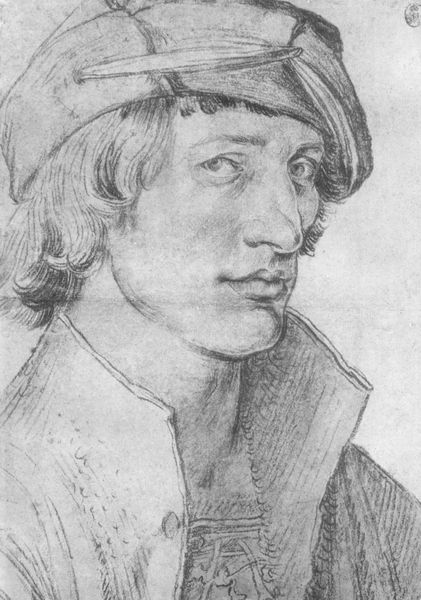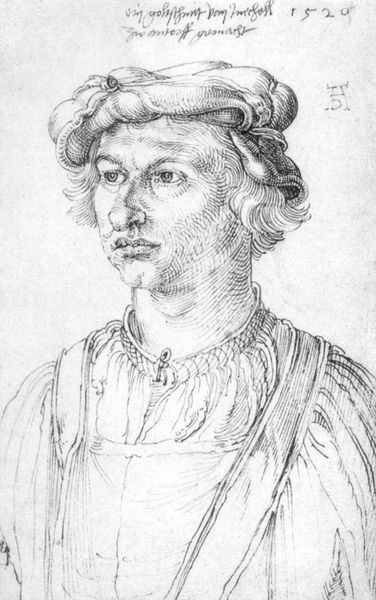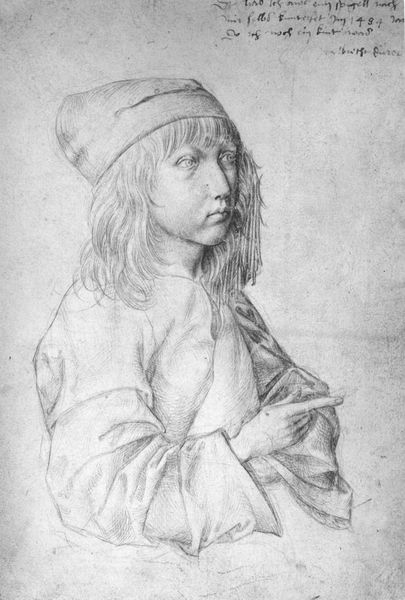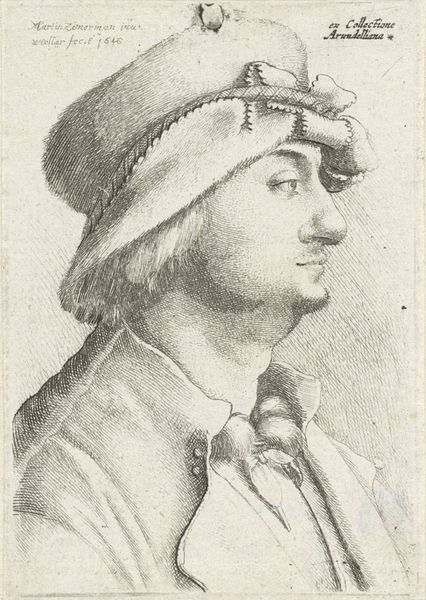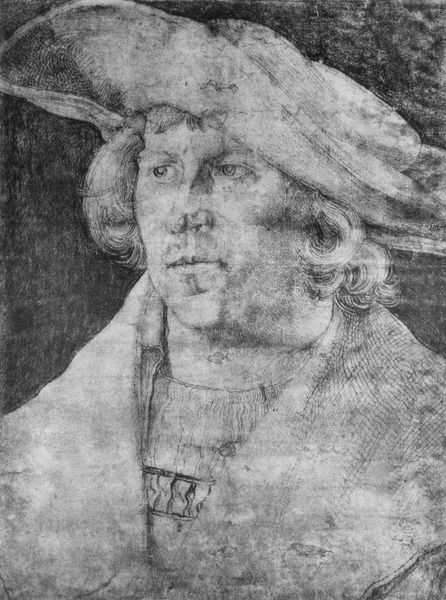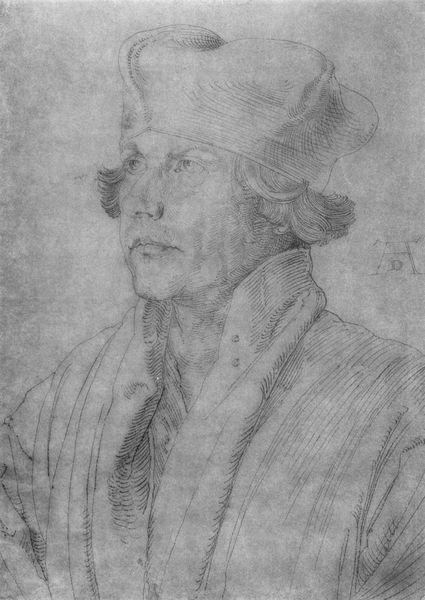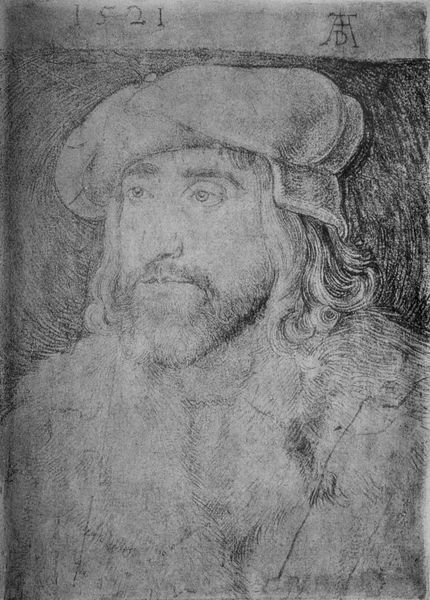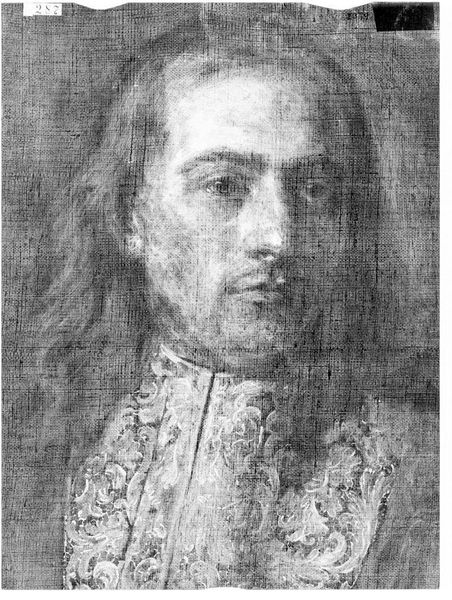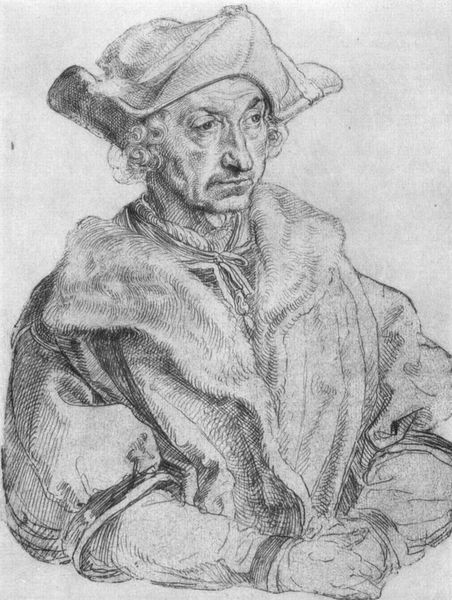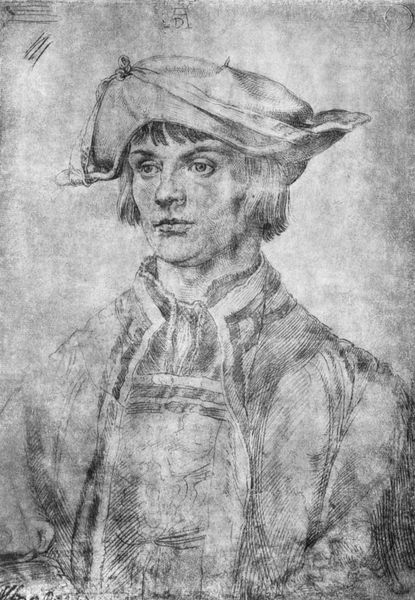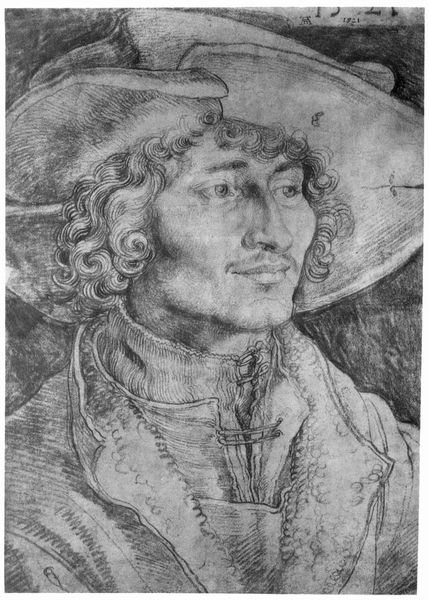
Portrait of Jobst Plankfelt 1520
0:00
0:00
albrechtdurer
Städelsches Kunstinstitut und Städtische Galerie (Städel), Frankfurt am Main, Germany
drawing, pen
#
portrait
#
pencil drawn
#
drawing
#
figuration
#
11_renaissance
#
pen
#
northern-renaissance
Copyright: Public domain
This is Albrecht Durer's Portrait of Jobst Plankfelt. It is a study in line and form executed with ink on paper. The subject's gaze holds us, the artist, the viewer, drawing us into the structure of the composition. Observe how Durer uses hatching to define the volumes of Plankfelt's face and clothing, creating a sense of depth and texture. The careful attention to detail in the rendering of the hat's folds contrasts with the flatter treatment of the background, emphasizing Plankfelt's presence. Here the symbolic order is inverted: surface is not superficial, but essential. Consider, too, how the artist constructs the subject's identity through these formal means. The precise lines and controlled shading suggest a character of intelligence and self-possession. This interplay between representation and abstraction reflects the broader intellectual currents of the time, where artists sought to reconcile classical ideals with the complexities of human experience. The artwork invites us to look beyond the surface representation and engage with the underlying principles of artistic construction and the cultural codes embedded within portraiture.
Comments
No comments
Be the first to comment and join the conversation on the ultimate creative platform.
